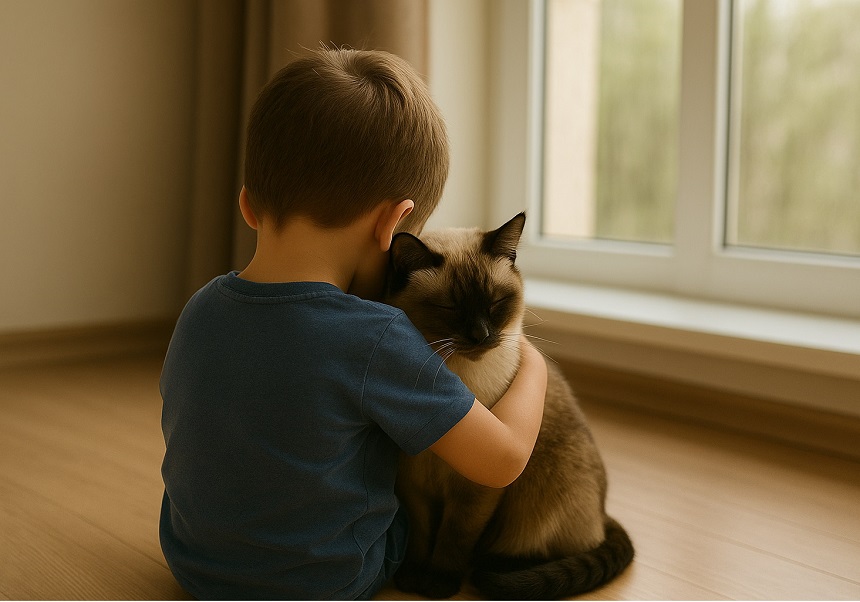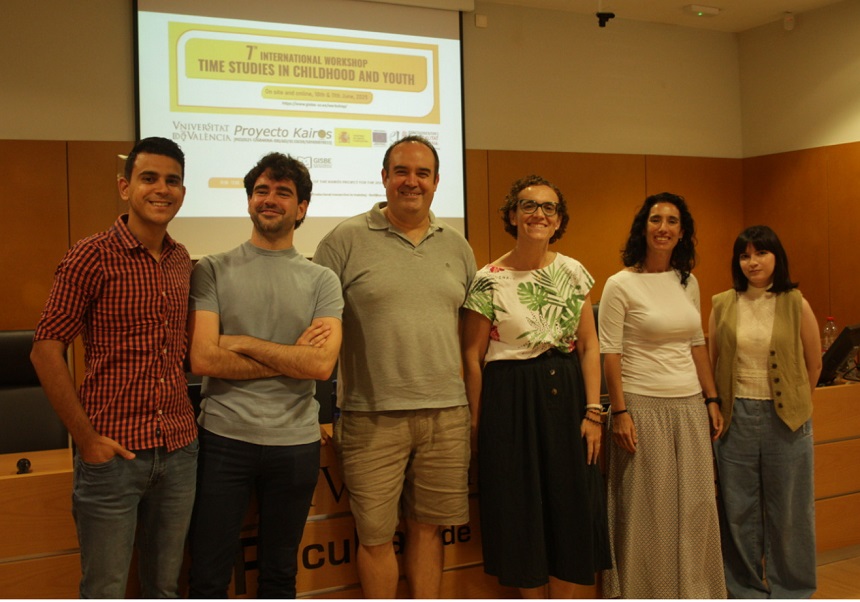Having pets in early childhood may influence children’s emotional development
- Marketing and Communication Service
- Scientific Culture and Innovation Unit
- November 12th, 2025

A research team from the INMA Project on childhood and environment — which includes the University of Valencia and the Fisabio Foundation of the Generalitat Valenciana among others — has analysed how pet ownership during the first years of life may be related to aspects of children’s emotional and behavioural well-being. The findings, based on data from 1,893 families in Valencia, Sabadell, Asturias and Gipuzkoa, suggest that both the type of animal and the timing of cohabitation can have different influences on emotional development in childhood.
The INMA Project, coordinated by the Spanish Biomedical Research Network Centre for Epidemiology and Public Health (CIBERESP), is a Spanish multicentre cohort created to study the effects of environmental factors (air, water, diet or surroundings) on child development.
The study, published in the World Journal of Pediatrics, examined the presence of various types of animals — such as dogs, cats, birds and “other animals” including rodents, fish or reptiles — in homes when children were aged one and between 4 and 5 years of age. Researchers then assessed their potential relationship with emotional or “internalising” problems (such as anxiety, depression or somatisation) and behavioural or “externalising” problems (such as rule-breaking or hyperactivity) at ages seven or eight.
Analyses revealed that continued ownership of “other animals” (such as fish, turtles or hamsters) was associated with a protective effect against emotional problems, whereas owning cats only at ages four or five showed a slight association with more emotional or behavioural symptoms. No significant differences were found for dogs or birds, nor for the overall variable of owning any type of pet.
According to the research team, the association between having a cat at age four or five and a higher risk of emotional or behavioural symptoms in mid-childhood should be interpreted with caution. “There may be family selection biases (for example, families with certain characteristics might be more likely to have cats), changes in living arrangements or pet care, or differences in how parents perceive children’s behaviour”, explains Marisa Estarlich, researcher at the Department of Nursing at the University of Valencia, co-author of the study and researcher at Fisabio and CIBERESP.
“These findings do not necessarily imply causality. There may also be unmeasured factors, such as the child’s actual attachment to the pet, the possible death of an animal (and the resulting grief), the living conditions or differences in parenting styles, which could all have an influence”, adds Llúcia González, CIBERESP researcher at Fisabio and first author of the article. The study also involved the CIBERESP, the University of Oviedo, the University of the Basque Country (EHU), the Universitat Jaume I of Castelló, the Barcelona Institute for Global Health (ISGlobal) and the IIS Biogipuzkoa.
On the other hand, the apparently protective effect of “other animals” (rodents, fish, reptiles, etc.) suggests that these less interactive pets might promote a stable relationship, potentially enhancing children’s psychological well-being. “Including this type of animal in children’s daily routines could contribute to the development of responsibilities in an environment where affection and empathy are put into practice”, says Ainara Andiarena, researcher in the BEHRG Group at the University of the Basque Country. Another co-author and CIBERESP researcher, Blanca Sarzo, concludes that “to strengthen these findings, it would be interesting to replicate the study with a larger sample and wider age range, so that these effects can be assessed over the longer term”.
Article reference:
González, L., Guxens, M., Sarzo, B. et al. Impact of pet ownership in early childhood at ages 1 and 4–5 years on mental health at ages 7–8: findings from the INMA project. World J Pediatr (2025). https://doi.org/10.1007/s12519-025-00942-2
Annex photo caption: From left to right: Blanca Sarzo, Llúcia González, Marisa Estarlich, Marisa Rebagliato.
Categories: Recerca, innovació i transferència , Internacionalització recerca , Infermeria , Cultura Científica , Difusió i comunicació científica , Investigació a la UV


















